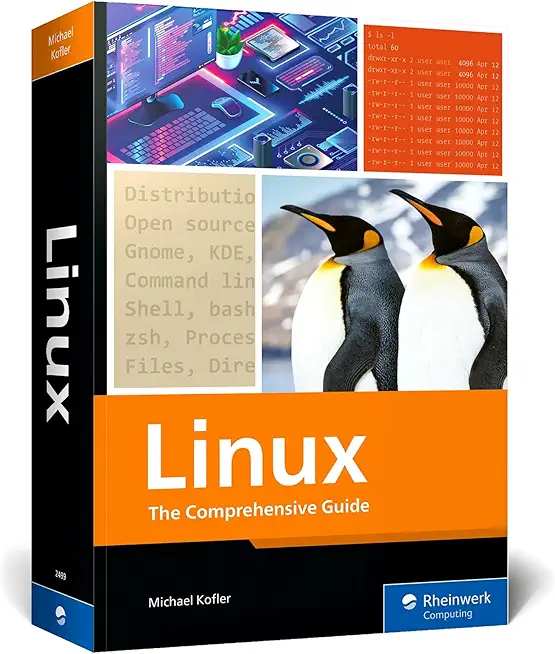AZ-800: ADMINISTERING WINDOWS SERVER HYBRID CORE INFRASTRUCTURE Training in Lorain
|
We offer private customized training for groups of 3 or more attendees.
|
||
Course Description |
||
| This course teaches IT Professionals how to manage core Windows Server workloads and services using on-premises, hybrid, and cloud technologies. The course teaches IT Professionals how to implement and manage on-premises and hybrid solutions such as identity, management, compute, networking, and storage in a Windows Server hybrid environment.
Course Length: 3 Days
Course Tuition: $1690 (US) |
||
Prerequisites |
|
| Before attending this course, students must have: Experience with managing Windows Server operating system and Windows Server workloads in on-premises scenarios, including AD DS, DNS, DFS, Hyper-V, and File and Storage Services Experience with common Windows Server management tools (implied in the first prerequisite). Basic knowledge of core Microsoft compute, storage, networking, and virtualization technologies (implied in the first prerequisite). Experience and an understanding of core networking technologies such as IP addressing, name resolution, and Dynamic Host Configuration Protocol (DHCP) Experience working with and an understanding of Microsoft Hyper-V and basic server virtualization concepts Basic experience with implementing and managing IaaS services in Microsoft Azure Basic knowledge of Azure Active Directory Experience working hands-on with Windows client operating systems such as Windows 10 or Windows 11 Basic experience with Windows PowerShell | |
Course Outline |
DescriptionModule 1: Identity services in Windows ServerThis module introduces identity services and describes Active Directory Domain Services (AD DS) in a Windows Server environment. The module describes how to deploy domain controllers in AD DS, as well as Azure Active Directory (AD) and the benefits of integrating Azure AD with AD DS. The module also covers Group Policy basics and how to configure group policy objects (GPOs) in a domain environment. Lessons
Lab : Implementing identity services and Group Policy
After completing this module, students will be able to:
Module 2: Implementing identity in hybrid scenariosThis module discusses how to configure an Azure environment so that Windows IaaS workloads requiring Active Directory are supported. The module also covers integration of on-premises Active Directory Domain Services (AD DS) environment into Azure. Finally, the module explains how to extend an existing Active Directory environment into Azure by placing IaaS VMs configured as domain controllers onto a specially configured Azure virtual network subnet. Lessons
Lab : Implementing integration between AD DS and Azure AD
After completing this module, students will be able to:
Module 3: Windows Server administrationThis module describes how to implement the principle of least privilege through Privileged Access Workstation (PAW) and Just Enough Administration (JEA). The module also highlights several common Windows Server administration tools, such as Windows Admin Center, Server Manager, and PowerShell. This module also describes the post-installation configuration process and tools available to use for this process, such as sconfig and Desired State Configuration (DSC). Lessons
Lab : Managing Windows Server
After completing this module, students will be able to:
Module 4: Facilitating hybrid managementThis module covers tools that facilitate managing Windows IaaS VMs remotely. The module also covers how to use Azure Arc with on-premises server instances, how to deploy Azure policies with Azure Arc, and how to use role-based access control (RBAC) to restrict access to Log Analytics data. Lessons
Lab : Using Windows Admin Center in hybrid scenarios
After completing this module, students will be able to:
Module 5: Hyper-V virtualization in Windows ServerThis module describes how to implement and configure Hyper-V VMs and containers. The module covers key features of Hyper-V in Windows Server, describes VM settings, and how to configure VMs in Hyper-V. The module also covers security technologies used with virtualization, such as shielded VMs, Host Guardian Service, admin-trusted and TPM-trusted attestation, and Key Protection Service (KPS). Finally, this module covers how to run containers and container workloads, and how to orchestrate container workloads on Windows Server using Kubernetes. Lessons
Lab : Implementing and configuring virtualization in Windows Server
After completing this module, students will be able to:
Module 6: Deploying and configuring Azure VMsThis module describes Azure compute and storage in relation to Azure VMs, and how to deploy Azure VMs by using the Azure portal, Azure CLI, or templates. The module also explains how to create new VMs from generalized images and use Azure Image Builder templates to create and manage images in Azure. Finally, this module describes how to deploy Desired State Configuration (DSC) extensions, implement those extensions to remediate noncompliant servers, and use custom script extensions. Lessons
Lab : Deploying and configuring Windows Server on Azure VMs
After completing this module, students will be able to:
Module 7: Network infrastructure services in Windows ServerThis module describes how to implement core network infrastructure services in Windows Server, such as DHCP and DNS. This module also covers how to implement IP address management and how to use Remote Access Services. Lessons
Lab : Implementing and configuring network infrastructure services in Windows Server
After completing this module, students will be able to:
Module 8: Implementing hybrid networking infrastructureThis module describes how to connect an on-premises environment to Azure and how to configure DNS for Windows Server IaaS virtual machines. The module covers how to choose the appropriate DNS solution for your organization’s need and run a DNS server in a Windows Server Azure IaaS VM. Finally, this module covers how to manage Microsoft Azure virtual networks and IP address configuration for Windows Server infrastructure as a service (IaaS) virtual machines. Lessons
Lab : Implementing Windows Server IaaS VM networking
After completing this module, students will be able to:
Module 9: File servers and storage management in Windows ServerThis module covers the core functionality and use cases of file server and storage management technologies in Windows Server. The module discusses how to configure and manage the Windows File Server role, and how to use Storage Spaces and Storage Spaces Direct. This module also covers replication of volumes between servers or clusters using Storage Replica. Lessons
Lab : Implementing storage solutions in Windows Server
After completing this module, students will be able to:
Module 10: Implementing a hybrid file server infrastructureThis module introduces Azure file services and how to configure connectivity to Azure Files. The module also covers how to deploy and implement Azure File Sync to cache Azure file shares on an on-premises Windows Server file server. This module also describes how to manage cloud tiering and how to migrate from DFSR to Azure File Sync. Lessons
Lab : Implementing Azure File Sync
After completing this module, students will be able to:
|
Course Directory [training on all levels]
- .NET Classes
- Agile/Scrum Classes
- AI Classes
- Ajax Classes
- Android and iPhone Programming Classes
- Azure Classes
- Blaze Advisor Classes
- C Programming Classes
- C# Programming Classes
- C++ Programming Classes
- Cisco Classes
- Cloud Classes
- CompTIA Classes
- Crystal Reports Classes
- Data Classes
- Design Patterns Classes
- DevOps Classes
- Foundations of Web Design & Web Authoring Classes
- Git, Jira, Wicket, Gradle, Tableau Classes
- IBM Classes
- Java Programming Classes
- JBoss Administration Classes
- JUnit, TDD, CPTC, Web Penetration Classes
- Linux Unix Classes
- Machine Learning Classes
- Microsoft Classes
- Microsoft Development Classes
- Microsoft SQL Server Classes
- Microsoft Team Foundation Server Classes
- Microsoft Windows Server Classes
- Oracle, MySQL, Cassandra, Hadoop Database Classes
- Perl Programming Classes
- Python Programming Classes
- Ruby Programming Classes
- SAS Classes
- Security Classes
- SharePoint Classes
- SOA Classes
- Tcl, Awk, Bash, Shell Classes
- UML Classes
- VMWare Classes
- Web Development Classes
- Web Services Classes
- Weblogic Administration Classes
- XML Classes
- Introduction to Spring 6, Spring Boot 3, and Spring REST
15 December, 2025 - 19 December, 2025 - See our complete public course listing






